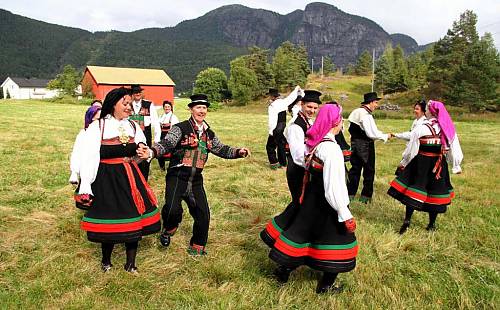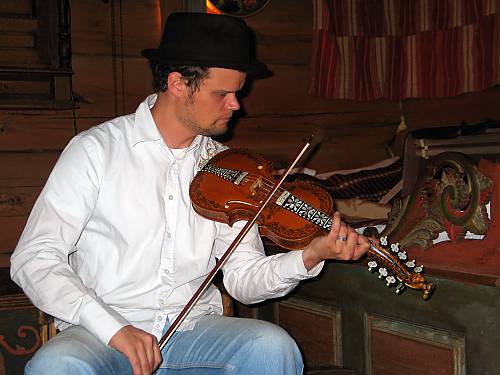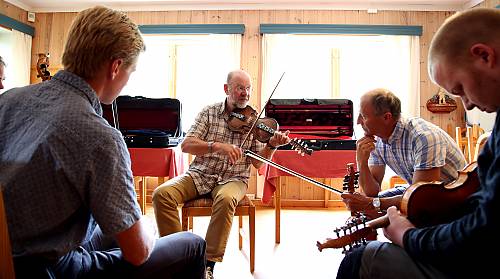Practice of traditional music and dance in Setesdal, playing, dancing and singing (stev/stevjing)
Inscribed in 2019 (14.COM) on the Representative List of the Intangible Cultural Heritage of Humanity

In the practice of traditional music and dance in Setesdal, playing, dancing and singing (stev/stevjing), traditional dance and music belong together, interwoven in the social context. The melodies are named after the ‘gangar’ dance and are mostly dance tunes; the melodies of the ‘stev’ songs can be played on instruments, and the lyrics often describe the dancing or playing of the practitioners. The ‘stev’ are often performed in the intervals between the dancing and playing, and are sung solo or by two or more singers in a dialogue with each other called ‘stevjing’. The lyrics are four-line verses telling a story. The dance is practised either by solo couples or by multiple couples in a clockwise circle with a change of dance partners and can be performed in either a modest way or wildly and vigorously. The music is performed on the ‘Hardanger’ fiddle, Norway’s national instrument, and the jaw harp. Setesdal can be traced back to the 18th century, and has enjoyed continuous transmission. It is constantly evolving, with new song texts being made for traditional ‘stev’ tunes, and new tunes composed. The traditional form of transmission – through social gatherings or from adult experts to younger generations – remains the main method of learning the element.









